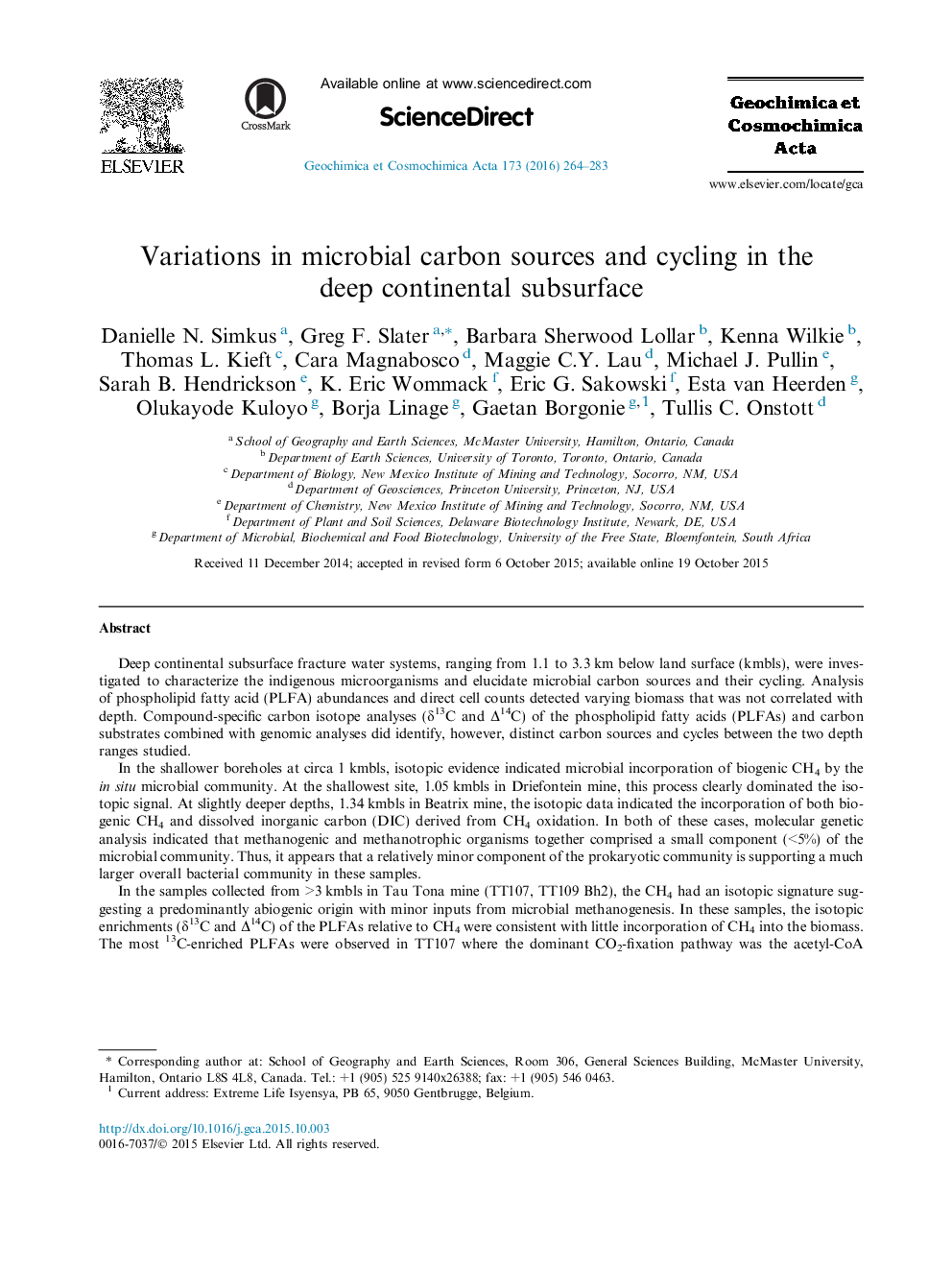| کد مقاله | کد نشریه | سال انتشار | مقاله انگلیسی | نسخه تمام متن |
|---|---|---|---|---|
| 6437566 | 1637984 | 2016 | 20 صفحه PDF | دانلود رایگان |
Deep continental subsurface fracture water systems, ranging from 1.1 to 3.3 km below land surface (kmbls), were investigated to characterize the indigenous microorganisms and elucidate microbial carbon sources and their cycling. Analysis of phospholipid fatty acid (PLFA) abundances and direct cell counts detected varying biomass that was not correlated with depth. Compound-specific carbon isotope analyses (δ13C and Î14C) of the phospholipid fatty acids (PLFAs) and carbon substrates combined with genomic analyses did identify, however, distinct carbon sources and cycles between the two depth ranges studied.In the shallower boreholes at circa 1 kmbls, isotopic evidence indicated microbial incorporation of biogenic CH4 by the in situ microbial community. At the shallowest site, 1.05 kmbls in Driefontein mine, this process clearly dominated the isotopic signal. At slightly deeper depths, 1.34 kmbls in Beatrix mine, the isotopic data indicated the incorporation of both biogenic CH4 and dissolved inorganic carbon (DIC) derived from CH4 oxidation. In both of these cases, molecular genetic analysis indicated that methanogenic and methanotrophic organisms together comprised a small component (<5%) of the microbial community. Thus, it appears that a relatively minor component of the prokaryotic community is supporting a much larger overall bacterial community in these samples.In the samples collected from >3 kmbls in Tau Tona mine (TT107, TT109 Bh2), the CH4 had an isotopic signature suggesting a predominantly abiogenic origin with minor inputs from microbial methanogenesis. In these samples, the isotopic enrichments (δ13C and Î14C) of the PLFAs relative to CH4 were consistent with little incorporation of CH4 into the biomass. The most 13C-enriched PLFAs were observed in TT107 where the dominant CO2-fixation pathway was the acetyl-CoA pathway by non-acetogenic bacteria. The differences in the δ13C of the PLFAs and the DIC and DOC for TT109 Bh2 were â¼â24â° and 0â°, respectively. The dominant CO2-fixation pathways were 3-HP/4-HB cycle > acetyl-CoA pathway > reductive pentose phosphate cycle.
Journal: Geochimica et Cosmochimica Acta - Volume 173, 15 January 2016, Pages 264-283
